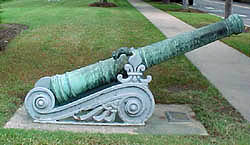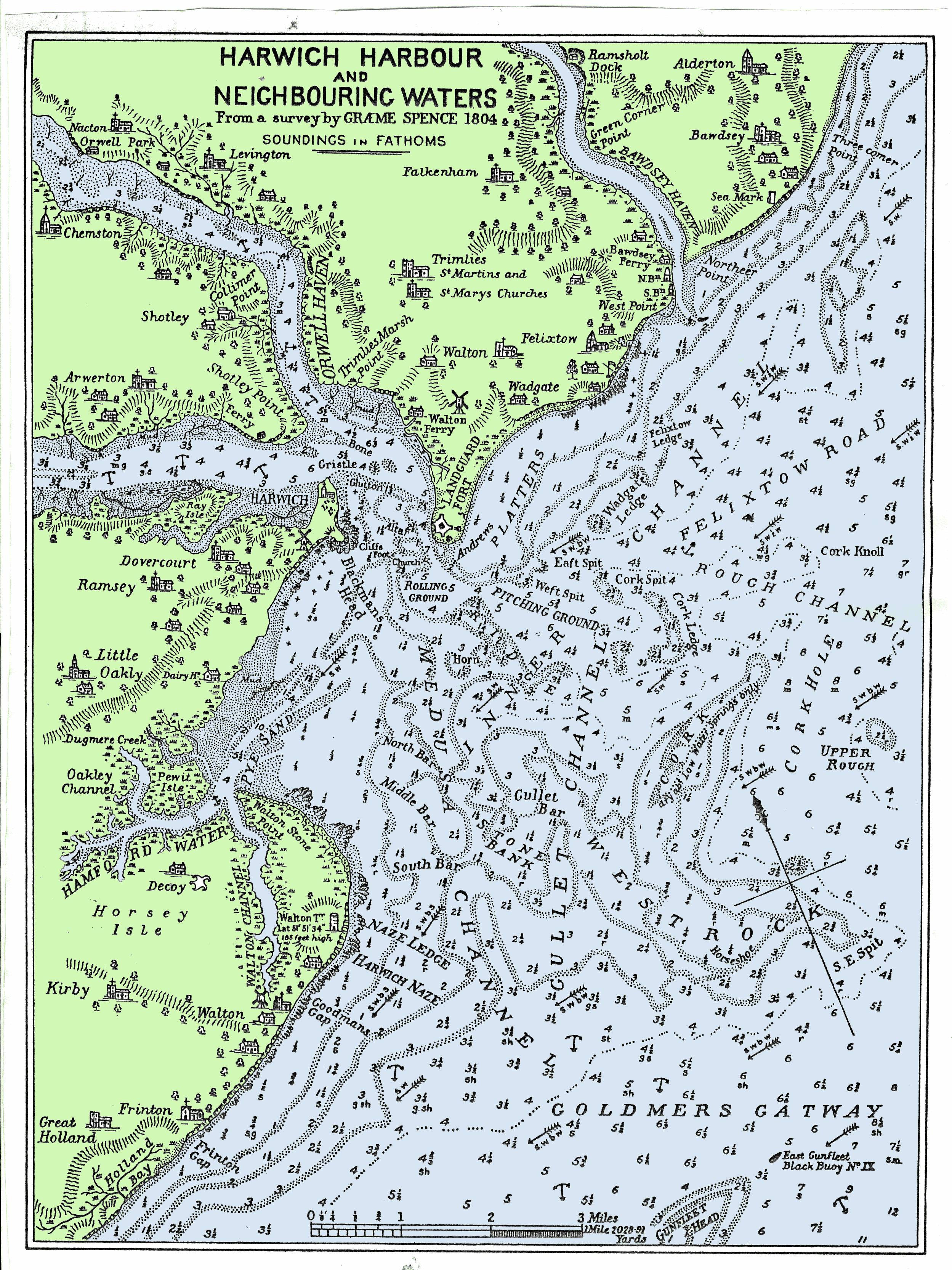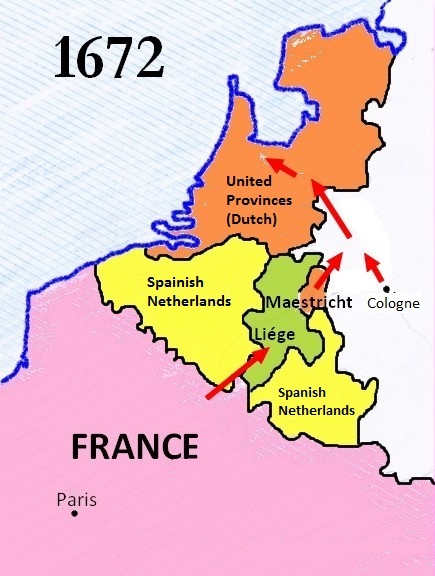|
HMS York (1660)
The ''Marston Moor'' was a 52-gun third rate frigate built for the navy of the Commonwealth of England at Henry Johnson's Blackwall Yard, and launched in November 1653. She was named for the Parliamentary victory over the Royalists at Marston Moor on 2 July 1644. She was one of new thirty frigates authorised by the Parliament on 28 September 1652, following the outbreak of the First Anglo-Dutch War in July. Nine of these were Third rates of 52 guns. The ''Marston Moor'' had 13 pairs of gunports on the lower deck, 12 pairs on the upper deck, and 4 pairs on the quarterdeck; unusually, she had an additional pair on the poop. After the Restoration in 1660, she was taken into the new Royal Navy and renamed HMS ''York'' in honour of the King's brother James, Duke of York, whom Charles II appointed as Lord High Admiral in June 1660. By 1665 her armament had been increased to 58 guns, comprising 20 demi-cannon and 4 culverins on the lower deck, 32 demi-culverins on the upper deck an ... [...More Info...] [...Related Items...] OR: [Wikipedia] [Google] [Baidu] |
Kingdom Of England
The Kingdom of England was a sovereign state on the island of Great Britain from the late 9th century, when it was unified from various Heptarchy, Anglo-Saxon kingdoms, until 1 May 1707, when it united with Kingdom of Scotland, Scotland to form the Kingdom of Great Britain, which would later become the United Kingdom. The Kingdom of England was among the most powerful states in Europe during the Middle Ages, medieval and Early modern period, early modern periods. Beginning in the year 886 Alfred the Great reoccupied London from the Danish Vikings and after this event he declared himself King of the Anglo-Saxons, until his death in 899. During the course of the early tenth century, the various Anglo-Saxons, Anglo-Saxon kingdoms were united by Alfred's descendants Edward the Elder (reigned 899–924) and Æthelstan (reigned 924–939) to form the Kingdom of the English. In 927, Æthelstan conquered the last remaining Viking kingdom, Scandinavian York, York, making him the first ... [...More Info...] [...Related Items...] OR: [Wikipedia] [Google] [Baidu] |
Saker (cannon)
The saker was a medium cannon, slightly smaller than a culverin, developed during the early 16th century and often used by the English. It was named after the saker falcon, a large falconry bird native to the Middle East. A saker's barrel was approximately long, had a caliber, calibre of , and weighed approximately . It could fire List of cannon projectiles, round shot weighing approximately using of black powder. The shot was intended to bounce along the ground to cause as much damage as possible, the explosive shell (projectile), shell being rare before the 19th century. Tests performed in France during the 1950s show that a saker's range was over when fired at a 45-degree angle. Henry VIII of England, Henry VIII amassed a Inventory of Henry VIII of England, large arsenal of sakers in the early 16th century as he expanded the Royal Navy and came into conflict with France. Henry's foundries used so much bronze that there was a world shortage of tin. According to the inve ... [...More Info...] [...Related Items...] OR: [Wikipedia] [Google] [Baidu] |
Harwich
Harwich is a town in Essex, England, and one of the Haven ports on the North Sea coast. It is in the Tendring district. Nearby places include Felixstowe to the north-east, Ipswich to the north-west, Colchester to the south-west and Clacton-on-Sea to the south. It is the northernmost coastal town in Essex. Its position on the estuaries of the Stour and Orwell rivers, with its usefulness to mariners as the only safe anchorage between the Thames and the Humber, led to a long period of civil and military maritime significance. The town became a naval base in 1657 and was heavily fortified, with Harwich Redoubt, Beacon Hill Battery, and Bath Side Battery. Harwich is the likely launch point of the ''Mayflower'', which carried English Puritans to North America, and is the presumed birthplace of ''Mayflower'' captain Christopher Jones. Harwich today is contiguous with Dovercourt and the two, along with Parkeston, are often referred to collectively as ''Harwich''. History ... [...More Info...] [...Related Items...] OR: [Wikipedia] [Google] [Baidu] |
Fourth Rate
In 1603 all English warships with a complement of fewer than 160 men were known as 'small ships'. In 1625/26 to establish pay rates for officers, a six-tier naval ship rating system was introduced.Winfield 2009 These small ships were divided into three tiers: fourth-, fifth- and sixth-rates. Up to the end of the 17th century, the number of guns and the complement size were adjusted until the rating system was actually clarified. A 'fourth-rate' was nominally a ship of over thirty guns with a complement of 140 men. In the rating system of the Royal Navy used to categorize sailing warships in the 18th century, a fourth-rate was a ship of the line with 46 to 60 guns mounted. They were phased out of ship of the line service during the French Revolutionary and Napoleonic Wars, as their usefulness was declining; though they were still in service, especially on distant stations such as the East Indies. ''Fourth-rates'' took many forms, initially as small two-decked warships, later a ... [...More Info...] [...Related Items...] OR: [Wikipedia] [Google] [Baidu] |
Battle Of Beachy Head (1690)
The Battle of Beachy Head, also known as the Battle of Bévéziers, was a fleet action fought on 10 July 1690 during the Nine Years' War. The battle was the most significant French naval victory over their English and Dutch opponents during the war. The Dutch lost seven ships of the line and three fire ships. Their English allies also lost one ship of the line, whereas the French did not lose a single vessel. Control of the English Channel temporarily fell into French hands but French Vice-Admiral Anne Hilarion de Tourville failed to pursue the Anglo-Dutch fleet with sufficient vigour, allowing it to fall back to the Thames. Tourville was criticised for not following up his victory and was relieved of his command. Royal Navy Admiral Arthur Herbert, 1st Earl of Torrington, who had advised against engaging the superior French fleet but had been overruled by Queen Mary II of England and her ministers, was court-martialled for his performance during the battle. Although he was acqu ... [...More Info...] [...Related Items...] OR: [Wikipedia] [Google] [Baidu] |
Battle Of Bantry Bay
The Battle of Bantry Bay was a naval engagement fought on 11 May 1689, a week before the declaration of the Nine Years' War. The English fleet was commanded by Arthur Herbert, 1st Earl of Torrington, Admiral Arthur Herbert, created Earl of Torrington after the Battle; the French fleet by François Louis de Rousselet, Marquis de Châteaurenault. Apart from the inshore operations at Siege of La Rochelle, La Rochelle in 1627–28, the Battle of Bantry Bay was the first time English and French navies had met in fleet action since 1545. The battle near the southern Irish coast was somewhat inconclusive but the French, endeavouring to supply King James II of England, James II in his attempt to re-establish his throne, had managed to unload their supplies for James's Irish campaign. But although the French failed to follow up their tactical success with strategic gain, Châteaurenault had inflicted considerable damage on the English fleet. Background Following the 'Glorious Revoluti ... [...More Info...] [...Related Items...] OR: [Wikipedia] [Google] [Baidu] |
Glorious Revolution
The Glorious Revolution, also known as the Revolution of 1688, was the deposition of James II and VII, James II and VII in November 1688. He was replaced by his daughter Mary II, Mary II and her Dutch husband, William III of Orange (William III and II), a nephew of James who thereby had an interest to the throne irrespective of his marriage to his cousin Mary. The two ruled as joint monarchs of Kingdom of England, England, Kingdom of Scotland, Scotland, and Kingdom of Ireland, Ireland until Mary's death in 1694, when William became ruler in his own right. Jacobitism, the political movement that aimed to restore the exiled James or his descendants of the House of Stuart to the throne, persisted into the late 18th century. William's invasion was the last successful invasion of England. Despite his own Catholicism, usually an impediment to Protestant support, James became king in February 1685 with widespread backing from the Protestant majorities in England and Scotla ... [...More Info...] [...Related Items...] OR: [Wikipedia] [Google] [Baidu] |
Battle Of Texel
The naval Battle of Texel or Battle of Kijkduin took place off the western coast of the island of Texel on 21 August 1673 (11 August O.S.) between the Dutch and the combined English and French fleets. It was the last major battle of the Third Anglo-Dutch War, which was itself part of the Franco-Dutch War (1672–1678), during which Louis XIV of France invaded the Republic and sought to establish control over the Spanish Netherlands. English involvement came about because of the Treaty of Dover, secretly concluded by Charles II of England, and which was highly unpopular with the English Parliament. The overall commanders of the English and Dutch military forces were Lord High Admiral James, Duke of York, later James II, and Admiral-General William III of Orange, his son-in-law and another future King of England. Neither of them took part in the fight. Prince Rupert of the Rhine commanded the Allied fleet of more than 100 warships and 28 fireships, taking control of the ... [...More Info...] [...Related Items...] OR: [Wikipedia] [Google] [Baidu] |
Battles Of Schooneveld
The Battles of Schooneveld were two naval battles of the Franco-Dutch War, fought off the coast of the Netherlands on 7 June and 14 June 1673 (New Style; 28 May and 4 June in the Julian calendar then in use in England) between an allied Anglo-French fleet commanded by Prince Rupert of the Rhine on his flagship the Royal Charles, and the fleet of the United Provinces, commanded by Michiel de Ruyter. The Dutch victories in the two battles, and at the Battle of the Texel that followed in August, saved their country from an Anglo-French invasion. Background The Franco-Dutch War of 1672–1678 resulted from the attempts of Louis XIV of France to annex the Spanish Netherlands. In order to achieve this, he had to first eliminate the Dutch Republic, that had in 1668 forced him to halt an offensive, as an adversary. In 1672, troops from France, Münster and Cologne invaded the Netherlands by land, while England's navy attacked Dutch shipping and threatened a seaborne invasion. T ... [...More Info...] [...Related Items...] OR: [Wikipedia] [Google] [Baidu] |
Battle Of Solebay
The Battle of Solebay took place on 6 June 1672 New Style, during the Third Anglo-Dutch War, near Southwold, Suffolk, in eastern England. A Dutch States Navy, Dutch fleet under Michiel de Ruyter attacked a combined Kingdom of England, Anglo-Kingdom of France, French force in one of the largest naval battles of the age of sail. Fighting continued much of the day, but ended at sunset without a clear victory. However, the scattered Allied fleet had suffered far more damage and was forced to abandon any plans to land troops on the Dutch coast. Prelude In 1672, both France and England declared war on the Dutch Republic, on the 6 and 7 April respectively. Johan de Witt, the Dutch Grand Pensionary, still harbored some hope for successful negotiations, especially with the support of influential anti-Catholic English figures such as Sir William Temple and the Edward Montagu, 1st Earl of Sandwich, Earl of Sandwich. However, Louis XIV of France had already revealed his true intentions durin ... [...More Info...] [...Related Items...] OR: [Wikipedia] [Google] [Baidu] |
Third Anglo-Dutch War
The Third Anglo-Dutch War, began on 27 March 1672, and concluded on 19 February 1674. A naval conflict between the Dutch Republic and England, in alliance with France, it is considered a related conflict of the wider 1672 to 1678 Franco-Dutch War. In the 1670 Secret Treaty of Dover, Charles II of England agreed to support an attack by Louis XIV of France on the Dutch Republic. By doing so, Louis hoped to gain control of the Spanish Netherlands, while Charles sought to restore the damage to his prestige caused by the 1667 Raid on the Medway. Under the treaty, Charles also received secret payments which he hoped would make him financially independent of Parliament. The French offensive in May and June 1672 quickly overran most of the Republic, with the exception of the core province of Holland, where they were halted by water defences. In early June, the Anglo-French fleet was badly damaged by the Dutch under Michiel de Ruyter at the Battle of Solebay. Shortly thereafter, Joha ... [...More Info...] [...Related Items...] OR: [Wikipedia] [Google] [Baidu] |
St James's Day Fight
The St James' Day Battle took place on 25 July 1666 (4 August 1666 in the Gregorian calendar), during the Second Anglo-Dutch War. It was fought between an English fleet commanded jointly by Prince Rupert of the Rhine and George Monck, and a Dutch force under Lieutenant-Admiral Michiel de Ruyter. Background After the Dutch had inflicted enormous damage on the English fleet in the Four Days Battle of 1–4 June 1666 which is normally considered a Dutch victory, the Dutch leading politician grand pensionary Johan de Witt ordered Lieutenant-Admiral Michiel de Ruyter to carry out a plan that had been prepared for over a year: to land in the Medway to destroy the English fleet while it was being repaired in the Chatham dockyards. For this purpose ten fluyt ships carried 2,700 marines of the newly created Dutch Marine Corps, the first in history. Also De Ruyter was to combine his fleet with the French one. The French however did not show up and bad weather prevented the landing. ... [...More Info...] [...Related Items...] OR: [Wikipedia] [Google] [Baidu] |





